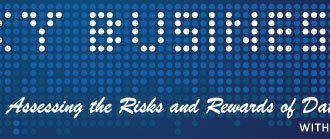When most people think of data, images of complex Microsoft workbooks and spreadsheets come to mind. Tables with rows and columns of structured data like dates, stock prices, sales, home sales, and invoices.
When most people think of data, images of complex Microsoft workbooks and spreadsheets come to mind. Tables with rows and columns of structured data like dates, stock prices, sales, home sales, and invoices.
Historically, many analysts and execs alike have had to think about data in this rather pedestrian way. To some extent, BI projects started in the mid to late 1990s changed that, although many organizations never “got around” to them. Excel was the killer app for this type of thing: simple, relatively powerful, and good enough.
These days, however, data visualization tools like Tableau and others allow users at all levels within an organization to think of data in a fundamentally different way. To paraphrase from the classic Peter Frampton album, data is starting to come alive.
Stories Over Spreadsheets
Are we talking about the death of the spreadsheet? Of course not. I just don’t see that happening anytime soon. However, no longer is Excel with attendant charts and pivot tables the sole means by which to present data, particularly to decision makers.
In the words of Kris Hammond, CTO of Narrative Science, a joint research project at Northwestern University Schools of Engineering and Journalism, ”For some people, a spreadsheet is a great device. For most people, not so much so. The story. The paragraph. The report. The prediction. The advisory. Those are much more powerful objects in our world, and they’re what we’re used to.”
No argument here, but simple Excel charts can’t possibly do justice to certain types of data. Look at the following figure:

One could make the argument that this is the equivalent of data art.
Simon Says
Get out of the “data is boring” mind-set. It doesn’t have to be. SaaS-based and open-source tools allow even cash-strapped organizations to make data interactive, informative, and dare I say exciting. Forget new colors, fonts, or superficial treatments. More than ever, it’s easy to make your data tell a story, to learn new things from visualized data that would otherwise be lost in plain-Jane columns and rows.
Without question, data can be turned into information and, ultimately, knowledge. Old school employees and execs need to realize that decisions for the most part today should be made based upon solid data, but the presentation of that data need not be boring.
Feedback
What say you?







